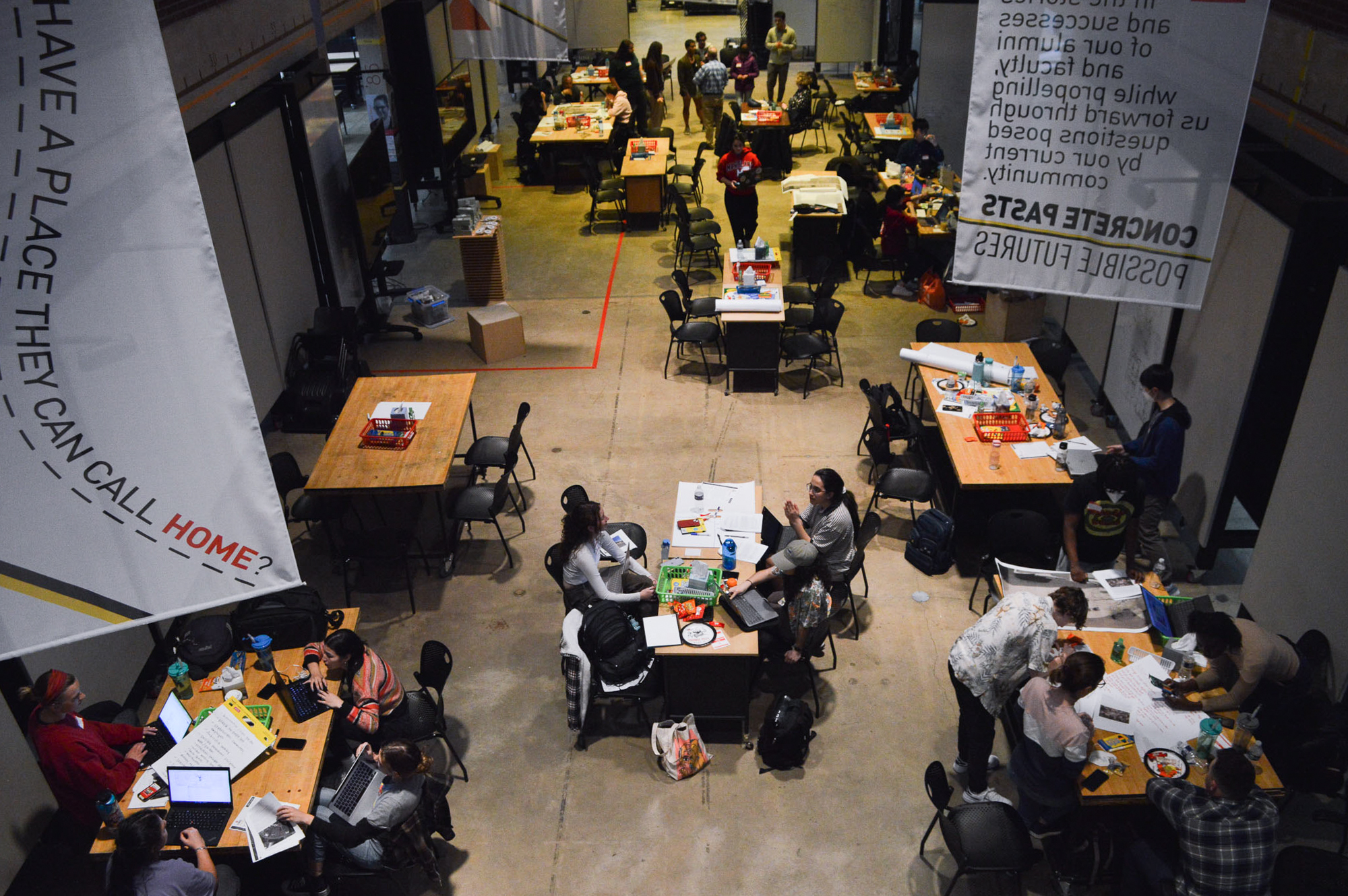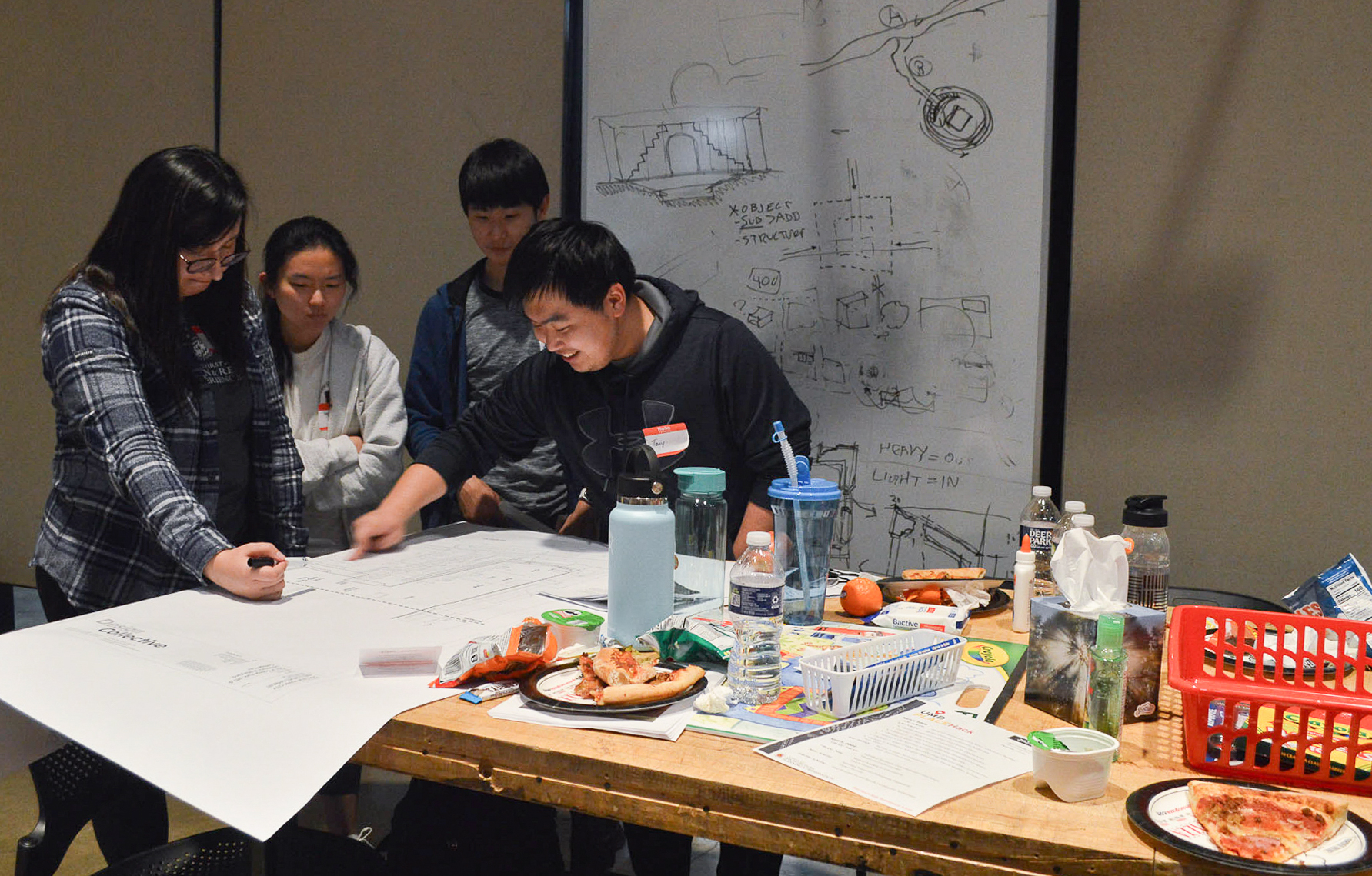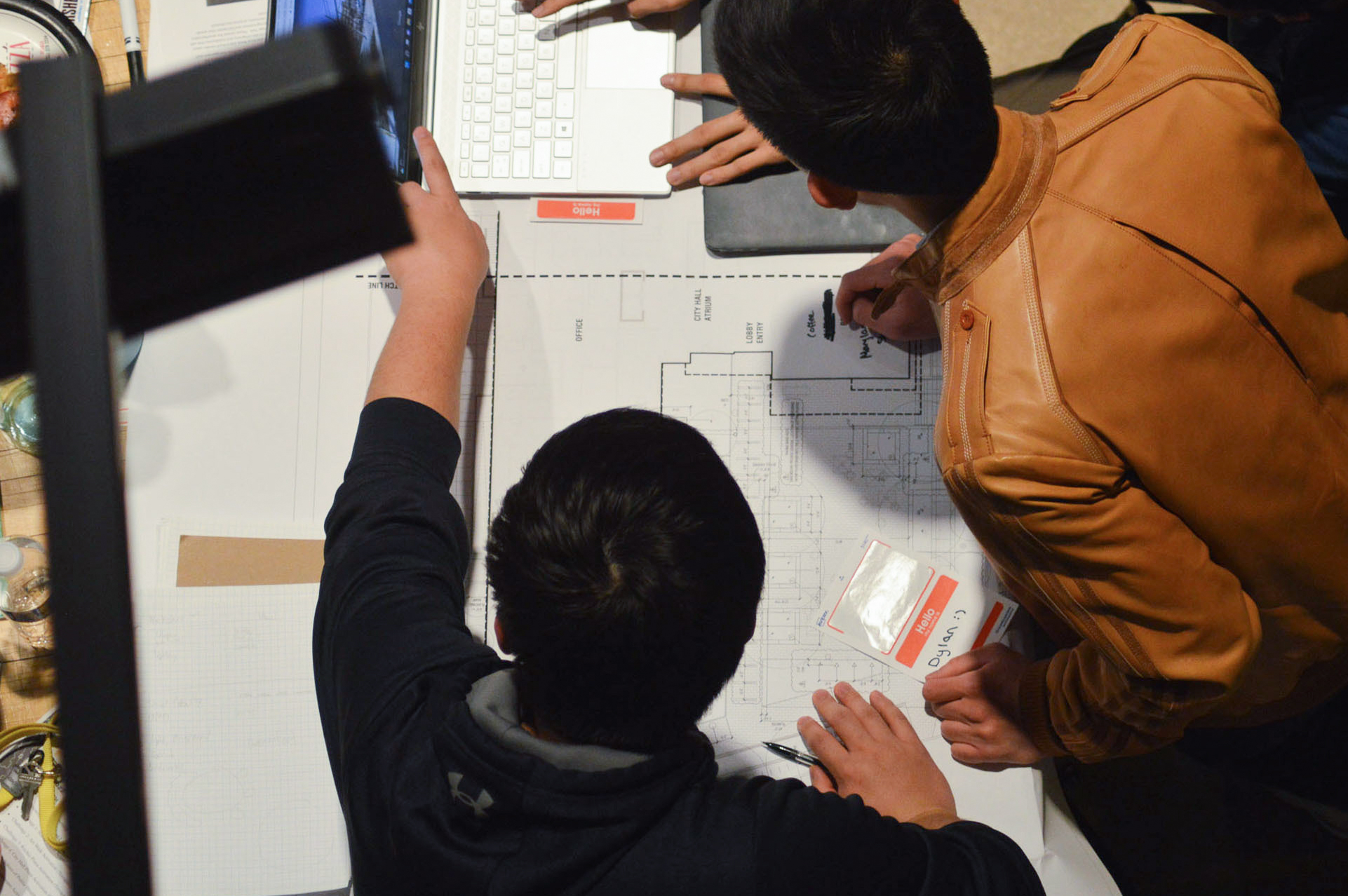By Miranda Song
For the Diamondback
Students of different majors worked on improving six outdoor spaces near the architecture, planning and preservation school building in the University of Maryland’s first ever 24-hour PLACEHack hackathon.
The event took place April 1 and featured $1,000 prizes for teams constructing place-based solutions around College Park. These projects were judged by their accessibility for people of all ages and needs.
“Students and faculty have been away because of COVID-19 for 18 months, and I started thinking about the things that we could do to help create the life that we’ve missed on campus,” said Dawn Jourdan, the dean of the architecture, planning and preservation school. “The hackathon seemed like a great idea to bring students and faculty from all over campus together.”
The judges presented six locations for contestants to improve — Stamp Student Union, the ArtWalk, the promenade between Route 1 and Ritchie Coliseum, the plaza in front of College Park City Hall, the public health school overhang and the exterior of the Parren J. Mitchell Art-Sociology Building.
The Stamp challenge tasked contestants to reinvent the southwest corner of the Campus Drive and Union Lane intersection in front of Stamp, with the goal of renovating the interior and exterior spaces to create improved physical entry points that are inviting to members of the community.
The team that won the award for the best Stamp reactivation plan included students Mahta Gooya, Natalie Leveque, Lucy Wess and Leah Paliakas. The students, whose majors ranged from computer engineering to English, created a project called “Guiding Us Home.” The group’s goal was to welcome, direct and engage visitors who would be arriving at the university from the soon-to-come Metro Purple Line stop.
“We wanted to welcome people to the University of Maryland,” Paliakas, a sophomore public policy and communications major, said. “We wanted to direct them to areas that have resources because there’s so many amazing resources that a lot of people don’t know about … We also wanted people to engage with activities that are being offered [around campus].”
The group created a schematic that included a fountain inviting visitors from the Purple Line stop, as well as Terrapin “footprints” painted on the concrete sidewalk to direct visitors to the entrances of Stamp.
“Reinviting every in-state or out-of-state student or guest, we give them the familiar Maryland iconography such as colors, native plants and blue mosaic to pay homage to the watershed in which it directs us to Stamp,” the winning team said during its final presentation.
In addition to giving students the opportunity to brainstorm creative ideas for underutilized spaces around campus, the hackathon provided an opportunity to bring students from different majors together. In fact, every college on the campus was represented by the participants of the hackathon.
“Students, by their nature, are inherently creative,” Jourdan said. “One group of people might be able to do enough research to sort of figure out who the users [of a space] are, but people who come from everywhere have a much better chance of understanding, not just people who might visit these spaces, but also people who provide, share and communicate what they have.”
Sophomore computer science majors Nathan Bezualem and Navid Misaghian won the prize for the most inclusive design with their project “The Dog House.”
“We were given the task of revamping the ArtWalk gallery space not too far from campus,” Misaghian said. “[Dogs] rip through stuff — they make a mess. No one’s looking after them [at home].”
To fix this, Bezualem and Misaghian came up with the idea to create a dog park right on the campus, creating more jobs for students and making the outdoor area more attractive to folks passing by and to the employees at work nearby.
“There’s a lot of communities that have a bunch of dogs that would benefit from this,” Misaghian said. “It’s not something that requires a lot of infrastructure … You’re able to go to an area with a lot of space, and you can move stuff really quickly.”





